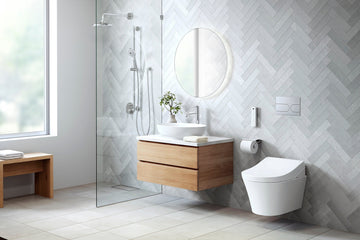As parents and caregivers, one of the primary concerns is ensuring the safety of children in every aspect of daily life. The bathroom, often overlooked, poses significant risks for young children due to its slippery surfaces and the presence of water. This is where child safety toilet locks come into play. By securing the toilet lid, these locks prevent curious toddlers from accessing the toilet, reducing the risk of drowning and exposure to unsanitary conditions.
Understanding the importance of child safety toilet locks is crucial for any parent or guardian striving to create a safe home environment. In this article, we will explore the significance of these locks, how they function, and the various types available on the market today. Moreover, we'll delve into tips for choosing the best lock for your family's needs and highlight the role these devices play in a comprehensive home safety strategy.

The Importance of Child Safety Toilet Locks
The bathroom is a high-risk area for children, with the toilet being particularly hazardous. Young children are naturally curious and may be drawn to the water in the toilet bowl. According to the U.S. Consumer Product Safety Commission, there are documented cases of toddlers drowning in toilets each year. Therefore, installing child safety toilet locks is a preventive measure that can avert potential accidents.
Beyond the risk of drowning, toilets can harbor germs and bacteria. Children who access the toilet unsupervised may put their hands in the water and subsequently into their mouths, leading to potential health issues. Public toilet technology also emphasizes the importance of sanitation, further underscoring why home bathroom safety is essential.
How Child Safety Toilet Locks Work
Child safety toilet locks are designed to prevent the toilet lid from being opened by young children. These devices typically feature a latch or a strap that secures the lid, requiring an adult to release it to access the toilet. Some models use a combination of adhesive pads and mechanical locks, while others may employ suction cups or other attachment methods.
These locks are generally simple to install and do not require tools, making them an easy addition to any bathroom. It's important to select a lock that is strong enough to withstand tampering by a curious child yet easy for adults to operate. Innovative kids toilet designs often incorporate these safety features to enhance child safety.
Types of Child Safety Toilet Locks
There are several types of child safety toilet locks available, each with unique features and benefits:
Adhesive-Mounted Locks
These locks use strong adhesive pads to attach the locking mechanism to the toilet lid and tank. They are easy to install and remove, making them a popular choice for families renting their homes or those seeking a temporary solution.
Strap Locks
Strap locks feature a flexible strap that wraps around the toilet lid and tank, secured by a buckle or latch. They provide a strong hold and are adjustable to fit various toilet sizes.
Clamp Locks
Clamp locks use a clamp or latch that attaches directly to the toilet lid, locking it in place. These are typically more secure and durable, offering a long-term solution for families with active toddlers.
Choosing the Right Child Safety Toilet Lock
When selecting a child safety toilet lock, several factors should be considered to ensure effectiveness and ease of use:
1. Compatibility with your toilet model: Ensure the lock fits your toilet's design and dimensions.
2. Ease of installation: Opt for locks that do not require tools and can be installed quickly.
3. Strength and durability: Choose a lock that can withstand tampering and is made from high-quality materials.
4. Ease of adult use: Ensure the lock is simple for adults to operate, allowing quick access when needed.
Integrating Child Safety Toilet Locks into a Home Safety Plan
Installing child safety toilet locks is a vital component of a broader home safety strategy. In addition to securing the toilet, parents should consider other measures like using bidets for zero waste living to enhance overall bathroom safety. This holistic approach includes securing cabinets, using faucet covers, and maintaining a clean and organized bathroom space.
Furthermore, educating children about bathroom safety and establishing boundaries can significantly reduce risks. Regularly checking and maintaining safety devices ensures they remain effective over time.

FAQs About Child Safety Toilet Locks
Are child safety toilet locks easy to install?
Yes, most child safety toilet locks are designed for easy installation without the need for tools. Adhesive-mounted options are particularly user-friendly.
Can toilet locks damage the toilet surface?
High-quality locks are typically designed to avoid damaging the toilet surface. However, it's important to follow the manufacturer's instructions and ensure proper placement.
At what age can I stop using toilet locks?
Toilet locks can be removed once children are old enough to understand bathroom safety rules and consistently follow them. This age varies for each child, but many parents find they can stop using locks around the age of 4 or 5.
This article contains affiliate links. We may earn a commission at no extra cost to you.






